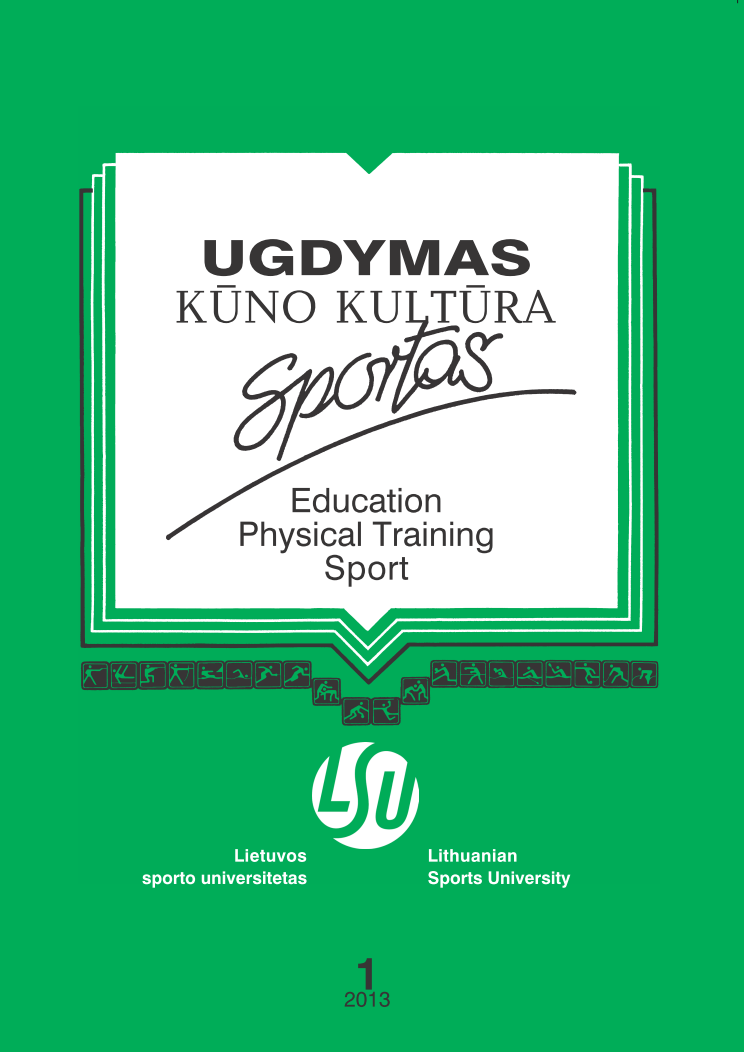Differences in Muscle Strength of the Dominant and Non-Dominant Leg of High Performance Female Athletes
Abstract
Research background and hypothesis. According research literature, the imbalance of hip muscles in the
dominant and non-dominant leg can cause wear and tear of the knee joint or tendinitis. Therefore the study was
carried out to determine whether there were differences in muscle strength and if muscle differences had influence
on knee joints of dominant and non-dominant legs for high performance women athletes.
Research aim was to compare muscle strength of knee flexor, extensor and hip abductor, adductor muscles of
the dominant and non-dominant legs for high performance female athletes.
Research methods. There were 53 high performance female athletes participating in the study, whose maximum
strength of flexor and extensor muscles of knee, as well as abductor and adductor muscles of hip had been measured
using a dynamometer MMT – Manual Muscle Tester.
Research results. The strength of flexor and extensor muscles of knee of the non-dominant leg was significantly
higher than that of the dominant leg. There was no statistically significant difference in strength of abductor and
adductor muscles of the dominant and non-dominant leg.
Discussion and conclusions. The strength of flexor and extensor muscles of knee of non-dominating leg for
high performance female athletes was significantly greater than muscle strength of the dominant leg. There was no
statistically significant difference in the strength of the abductor and adductor muscles of hip of the dominant and
non-dominant leg. It is advisable to develop exercises to strengthen these muscle groups in order to prevent knee
injury in the future.
Keywords: knee flexors, knee extensors, hip abductors, hip adduction.
Downloads
Published
Issue
Section
License
Copyright (c) 2018 Baltic Journal of Sport and Health Sciences

This work is licensed under a Creative Commons Attribution 4.0 International License.






